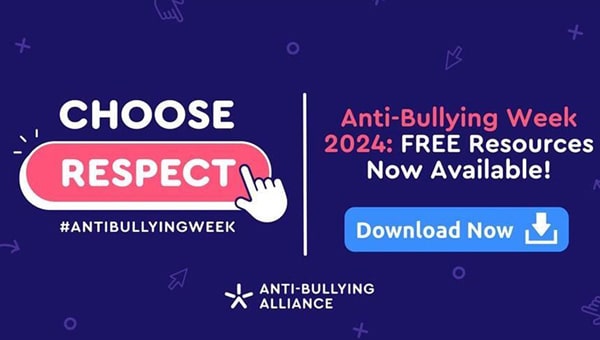How this education expert saved 91% on a seller to school's social media cost per click
How this education expert saved 91% on a seller to school's social media cost per click
Kat reveals the methods she took to dramatically reduce a client's social media spend.
Kat reveals the methods she took to dramatically reduce a client's social media spend.

I’ve headed up the Social Media service here at Sprint for two years now and in that time I’ve learnt a thing or two about maximising impact whilst cutting spend.
So, when one of our clients came to me asking for help to cut costs on their teacher-targeted social media advertisements, I put my serious face on, and got down to business.
With some scrutinous investigation into their current advert, some tried-and-tested selling-to-schools tricks, and plenty of careful management, I was able to bring their cost per click down from
£7.69 to £0.67.
A £7.02 per click saving, or a 91% reduction!
But how is this possible I hear you cry?
Step 1: Understand the client, the product, and the goal Having been managing our clients' education marketing email strategy, I already knew their brand, product, and tone inside-out.
But reaching teachers on social media can be an entirely different ballgame compared to email, technicalities of text limits and click-through tactics aside.
You're no longer reaching the teacher in their classroom when their mind is already thinking about school services and products - you're reaching them during their downtime when their focus could lie elsewhere, so your strategy will have to work twice as hard to capture their interest.
Of course, that's not to say that mastering the art of social media is so hard that it's best left undisturbed.
While an active feed is great to appease curious teachers wanting to browse your social feeds before committing to a purchase from you (which 75% of consumers do), an advert can still achieve great success if the purpose is to encourage click-throughs to your website.
This advert was to do just that, encouraging teachers to click through and read their "Top 10 School Trips" blog. We know adverts that offer free value assets or insightful blogs are more valuable in the eyes of a teacher than a general campaign - one, because they're getting something of value for nothing; and two, because what proves useful to one teacher would probably also benefit their colleagues, so they'll be more likely to hit share.
Step 2: Identify the areas for improvement The beauty of blogs and value assets means you can keep the sales tactics on your website and off your social media. Teachers are some of the most marketed-to people in the world, so an advert explicitly stating "Book one of our school trips" could very well turn teachers off at seeing yet another hard sales tactic, especially in their free time.
But, being able to offer them free advice, tips, and strategies lets them know you're on their side, making them think of you as a helpful, trustworthy supplier.
They'll then click through, be totally onboard with your great ideas, and, when you've ended your blog with a simple "If you'd like to book any of these trips, just get in touch", be more likely to enquire - because they know you genuinely care, and already think your product is excellent.
This was perhaps the reason why our client's advert had a pricey cost-per-click rate. Their content, a video, was fantastic, getting a high viewing rate and a low cost-per-engagement rate. We know teachers love to watch videos because they ask for less concentration from a busy teacher and offer the opportunity to multi-task.
But, their accompanying text was rather salesy, directly asking teachers whether they'd booked their trip and potentially putting teachers off. They'd also only featured one trip location, but broadcasted their advert to the whole of the UK.
Inevitably, many schools would be much too far away, so again wouldn't click as the advert was simply irrelevant to a large portion of their audience who may not be able to conjure up such trips given tight time-schedules and budgets.
Finally, they'd left their targeting open to every type of educational establishment, but the video featured solely primary school pupils. The proof is in the pudding here - the secondary-based handle they targeted had the most expensive cost-per-view, because the video simply wasn't relevant to them. They were still being marketed to, but they had zero reason to watch it.
Step 3: Design the perfect advert Based on this, we knew we'd need to make this advert as inclusive as possible. We're huge advocates for incorporating videos in edu-marketing social campaigns as they get much higher engagement rates, but, unfortunately, our client didn't have one video to suit both primary and secondary schools whilst avoiding focusing on just one location.
With a video out of the question, we knew we'd have to work even harder to put together an eye-catching image to keep the engagement rate up.
After a lot of thought and research, we put together a collage of images that conveyed all age groups, and showed there is more than one trip location with a multitude of activities on offer at each. Pulling another trick out from up our sleeve, we also settled on images with plenty of bright colours, and ones that would stand out from the predominantly blue-and-white colour theme of the social site to increase the engagement rate.
To top it off, we included a large instance of their logo; as they're already a trusted name in the education industry, making their name as clear as possible immediately lets teachers know this is an honest advert from an organisation they’re already familiar with.
When it came to the accompanying text, we wanted to keep this as short as possible to avoid overwhelming teachers or taking the focus away from the image, whilst still ensuring we conveyed all the accurate information and the huge message of inclusivity, which is a vital one within the education industry.
We began with an open-ended question to pique curiosity and get teachers already considering their range of trips, successfully coaxing their focus back into school-mode, then reinforced that the trips are suitable for any age, topping it off with an enticing yet powerful closing statement of why the trips prove invaluable to staff and pupils alike.
Step 4: Set up the campaign and target your audience With any social media campaign we run, we always set the campaign up to be a "clicks and conversions" campaign. This encourages the social algorithm to optimise the targeted audience to those most likely to click through to their website, as opposed to those more likely to stay on the social media platform and just browse their other posts.
Understandably, this is the campaign which tends to generate the lowest cost-per-click amongst a teacher audience.
Then, it was time to set up the audience. For a very quick background, we tend to see lower cost-per-clicks when we target education staff on Twitter, but Twitter's targeting is a lot more limited than Facebook's targeting.
So, for campaigns that don't need to be restricted to specific year groups, job roles, or local education authorities, we will always encourage Twitter ads. But, for clients who want to target specific teachers (for instance, only primary school headteachers in London, or only secondary school history teachers in the West Midlands) we suggest Facebook for optimal results.
As our client's advert was suitable for every year group across the UK, and wanted it shown to fairly common and easy-to-target job roles, it was a no-brainer to go with Twitter during our initial planning stages.
Fast-forward to now, and we picked a few teacher influencers whose audiences on Twitter would target similar users. The handles we picked had performed exceptionally well on a similar campaign for another client, so we were confident we were starting off on the right foot.
Step 5: Hone your advert - and achieve your dream stats Of course, there's no guarantee that what works for one edu-strategy will work for another - and even what worked last month might be different for this month. Once the advert is up, and left for 7-10 days to settle so the Twitter algorithm can help refine the technicalities of your ad behind the scenes, it's time to step in and enhance what's working - and fix what's not.
Dedicating even just half an hour per week to look at what kind of teachers in what location are showing a real interest in your advert means you gain a deeper understanding of how your product or service is perceived by the education industry. You can keep honing your audience to focus on more specific teaching types, a process which continually cuts your cost per click. You'll also be left with a pretty accurate audience of who best to target through other education marketing strategies (such as emails or postal campaigns) where marketing to the wrong type of teacher in the wrong location is far more costly.
I hope you've picked up a few things or two about maximising your teacher-targeted social media strategies. If you'd like some input from Sprint Education about how we could help you manage your social media strategy, give us a call on 01684 297374, or email us at info@sprint-education.co.uk.
Tags
Social Media
Similar Articles
VIDEO: Selling to Schools Insights - Chapter 2 - Communicating with Schools
We analyse chapter 2 of The State of Selling to Schools 2023, discover how emails compare to social media and postal marketing, how often each is viewed and what leads to the most positive teacher responses.
Read PostWhy Email Marketing Wears the Crown in 2023
Learn why email marketing is the number-one method of generating leads and making more sales with schools (including the must-know statistics for 2023).
Read Post















































